


THE PREMIER SPORTING GOODS STORE ON PRINCE OF WALES ISLAND
FOR ALL YOUR FISHING, HUNTING, AND CAMPING NEEDS! KNOWLEDGEABLE STAFF WILL LET YOU KNOW WHERE, WHEN AND HOW!









THE PREMIER SPORTING GOODS STORE ON PRINCE OF WALES ISLAND
FOR ALL YOUR FISHING, HUNTING, AND CAMPING NEEDS! KNOWLEDGEABLE STAFF WILL LET YOU KNOW WHERE, WHEN AND HOW!





Nestled in the foothills of the Ozark Mountains in Missouri, High Adventure Ranch offers all of the excitement of western big game hunting without the costs and hassles.



Be prepared for a fair chase hunt! With over 3 square miles of prime natural habitat, our ranch provides challenges to even the most seasoned hunter, but our experienced guides and “No Game, No Pay” policy practically ensure that you won’t go home empty handed. In addition, High Adventure’s hunting season is year-round, allowing ample time to fit the most demanding schedule.
While our whitetail, elk, wild boar and red stag hunts top our hunter’s most popular lists, hunters from around the world have visited our ranch, hunting everything from American bison, black buck, fallow deer to Spanish goats and African game.
So, whether you desire a 10-point whitetail mount for your trophy room or simply the thrill and challenge of taking down one of our many elusive big game animals, High Adventure Ranch guarantees memories of an unparalleled hunting experience that will bring you back again and again.






Volume 12 // Issue 9 // June 2023
PUBLISHER
James R. Baker
GENERAL MANAGER
John Rusnak
EDITOR-IN-CHIEF
Andy Walgamott
OFFICE MANAGER / COPY EDITOR
Katie Aumann
LEAD CONTRIBUTOR
Frank Jardim
CONTRIBUTORS
Larry Case, Scott Haugen, Phil Massaro, Mike Nesbitt, Paul Pawela, Nick Perna
SALES MANAGER
Paul Yarnold
ACCOUNT EXECUTIVES
Lucas Hoene, Mike Smith, Zachary Wheeler
DESIGNER
Lesley-Anne Slisko-Cooper
PRODUCTION ASSISTANT
Kelly Baker
WEBMASTER / INBOUND MARKETING
Jon Hines
INFORMATION SERVICES MANAGER
Lois Sanborn
ADVERTISING INQUIRIES ads@americanshootingjournal.com

Mark Lamb, the twice-elected sheriff of Pinal County, Arizona, outside Phoenix, announced in April that he was running for the US Senate as a Republican, challenging Kyrsten Sinema, a Democrat turned Independent. (SHERIFF MARK LAMB)
Website: AmericanShootingJournal.com

Facebook: Facebook.com/AmericanShootingJournal
Twitter: @AmShootingJourn
MEDIA INDEX PUBLISHING GROUP 941 Powell Ave SW, Suite 120, Renton, WA 98057 (206) 382-9220 • (800) 332-1736 • Fax (206) 382-9437 media@media-inc.com • www.media-inc.com

You met Mark Lamb, the top law enforcement officer of Pinal County, Arizona, in these pages back in November 2020, and now he’s thrown his big cowboy hat in the ring to be state’s next US Senator. Paul Pawela offers a full-throated endorsement of Lamb and his bid. 28

39 L AW ENFORCEMENT SPOTLIGHT: JOB SATISFACTION, DELIVERED
From the mundane to assisting with a roadside childbirth and more, it’s all in a day’s work for police officers. Just ask Deputy Daniel “Red” Jones of Florida, who’s helped deliver – count ’em – not one, not two, but three babies!
41 ROAD HUNTER: MAN-EATERS I’VE KNOWN
Scott Haugen describes it as the “pinnacle of all hunting” –tracking down and killing lions and crocodiles terrorizing African villages and a man-killing polar bear in the depths of the Alaskan Arctic’s long night. Get ready for Scott’s spine-tingling adventures that saved human lives.
49 BULLET BULLETIN: PROGRESS WRIT IN LEAD AND COPPER
From the black bears of the Northern Rockies to the plains game of Africa and beyond, Phil Massaro wouldn’t hesitate to reach for Trophy Bonded bullets. He shares an appreciation for this Federal family line.
64 TACTICAL RIFLE BUILD
Sometimes, the only way to get exactly what you want is to do it yourself. With that, as well as features of his SWAT and hunting .308s in mind, Nick Perna created “a quality rifle made specifically for my needs,” all for under $1,000!
71 SC ATTERGUN: THE SHOTGUN AT WAR
From the Civil War and the trenches of Europe to the jungles of Asia and modern urban warfare of the Middle East, shotguns have served Americans in combat over the centuries. Larry Case traces the story of “trench guns” and other short-range weapons of war.

79 SELF-DEFENSE TRAINING: TRAINING WITH TACTICIAN CONCEPTS’ ALLEN ELISHEWITZ, PART TWO
Continuing where he left off in the April issue, Paul Pawela details how top trainer Allen Elishewitz’s four-day self-defense course focusing on knives, close-quarters shooting, firing from vehicles, and more, will better prepare you for when you know what hits the fan.

89 BL ACK POWDER: WARMING TO COLD-WEATHER LUBE
SPG Sales introduced its “Tropical” bullet lube for black powder shooters in hot weather awhile back, so it only makes sense that the company would also put out a product for cooler climes – Bear Grease. And it also only makes sense that our Mike Nesbitt would test it out! See what kind or results he achieved with the lube for muzzleloaders and black powder cartridge shooters.
19 Gun Show Calendar

23 Competition Calendar
25 Precision Rifle Series Schedule, Recent Results


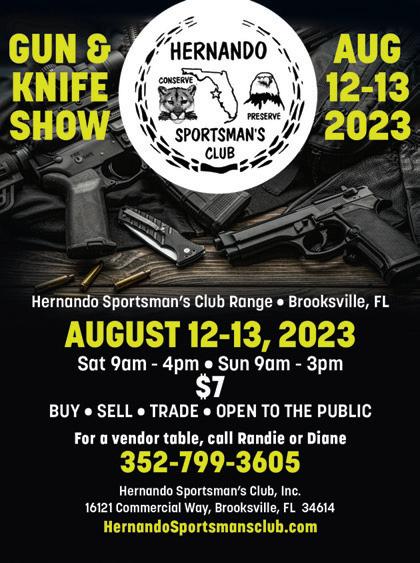


October 8, 2023
November 12, 2023
December 10, 2023
www.kcsshow.com
7:30 am to 1:30 pm
$7 Admission
(Dealers in at 5:00 am)
Kane County Fairgrounds 525 S. Randall Rd. St. Charles, Illinois 60174

September 17, 2023
October 22, 2023
November 19, 2023
December 17, 2023
www.mcsshow.com

7:30 am to 1:00 pm
$5 Admission (Dealers in at 6:00 am)
McHenry County Fairgrounds 11900 Country Club Rd. Woodstock, IL 60098
For vendor space, contact Mick Stout at kcss@mickstout.com or (815) 217-2266
Constellation, Inc. • PO Box 26 • Kingston, IL 60145 www.kcsshow.com • www.facebook.com/KCSS.Constellation.Inc
AZ Gun RAdio azgunradio.com
C&E Gun Shows cegunshows.com
Constellations, Inc. kcsshow.com
Crossroads Of The West Gun Shows crossroadsgunshows.com
Florida Gun Shows floridagunshows.com
G&S Promotions gunshowtrader.com
June 10-11
June 23-25
July 8-9
Fort Myers, Fla. Lee Civic Center
Conway, Ark. Expo Center
Nacogdoches, Texas Civic Center
Mountain Home, Ark. Baxter County Fairgrounds
July 15-16 Elk City, Okla. Elk City Civic Center
July 28-30
August 5-6
August 11-13
Nacogdoches, Texas Civic Center
Heber Springs, Ark. Community Center
Canton, Texas Canton Civic Center
September 16-17 Henderson, Texas Rusk County Expo Center
September 22-24 Nacogdoches, Texas Civic Center
To have your event highlighted here, send an email to kaumann@media-inc.com.
Hernando
RK Shows rkshows.com
Real Texas Gun Shows therealtexasgunshow.com
Tanner Gun Shows tannergunshow.com
Wes Knodel Gun Shows wesknodelgunshows.com



usashooting.org uspsa.org gssfonline.com



June 1-10
USAS Rifle & Pistol National Championships Fort Moore (formerly Fort Benning), Ga.
June 2-4
Utah June PTO Salt Lake City, Utah
June 7-11
Nor-Cal Section Championship Sloughhouse, Calif.
June 8-11
Area 4 Championship Whitewright, Texas
June 9-11
Maryland State Championship Thurmont, Md.
June 9-11
Shotgun Junior Olympic National Championships - Skeet Hillsdale, Mich.
June 10
MRC 3-P and Prone Elk River, Minn.
June 16-18
Shotgun Junior Olympic National Championships - Trap Hillsdale, Mich.
July 6-11
Rifle Pan Am Selection Match 2 Colorado Springs, Colo.
June 10-11
Idaho Sectional Championship Nampa, Idaho
June 16-18
Area 5 Two Gun Championship Muskego, Wis.
June 16-18
Kentucky State Championship Wilmore, Ky.
June 10-11
Glock Fire on the Mountain Johnstown, Pa.
June 10-11
Beaver State Ballistic Challenge Dundee, Ore.
June 9-11
Washington State Championship Cashmere, Wash.
June 17-18
Garden State Regional Classic Jackson, N.J.
June 24-25
Bourbon Country Classic Lawrenceburg, Ky.
June 16
Oregon State Shoot Prineville, Ore.
June 17-18
cmsaevents.com
June 10-11
Virginia State Championship Doswell, Va.
June 2-3
WI State IDPA Championship West Bend, Wis.
June 3-4
idpa.com
Rust Belt Regional Championship Wampum, Pa.
Iowa State Championship Iowa Falls, Iowa
June 16-17
South East Idaho Regional Idaho Falls, Idaho
June 23-24
Illinois State IDPA Championship Sparta, Ill.
To have your event highlighted here, send an email to kaumann@media-inc.com.
June 21-25
Sig Sauer Carry Optics Nationals Marengo, Ohio
July 8-9
Alaska USPSA Section Championship Chugiak, Alaska
July 19-23
Federal USPSA Multi-Gun National Championship Forest Lake, Minn.
June 24-25
Montana Glock Classic Missoula, Mont.
July 8-9
Scarborough Fish & Game Annual GSSF Match Scarborough, Maine
June 24-25
Minnesota State Shoot Grand Rapids, Minn.
June 30-July 2
North Mountain Regional West Yellowstone, Mont.
July 14-16
Pennsylvania State IDPA Championship Hunlock Creek, Pa.
July 22-23
Washington State IDPA Championship Puyallup, Wash.
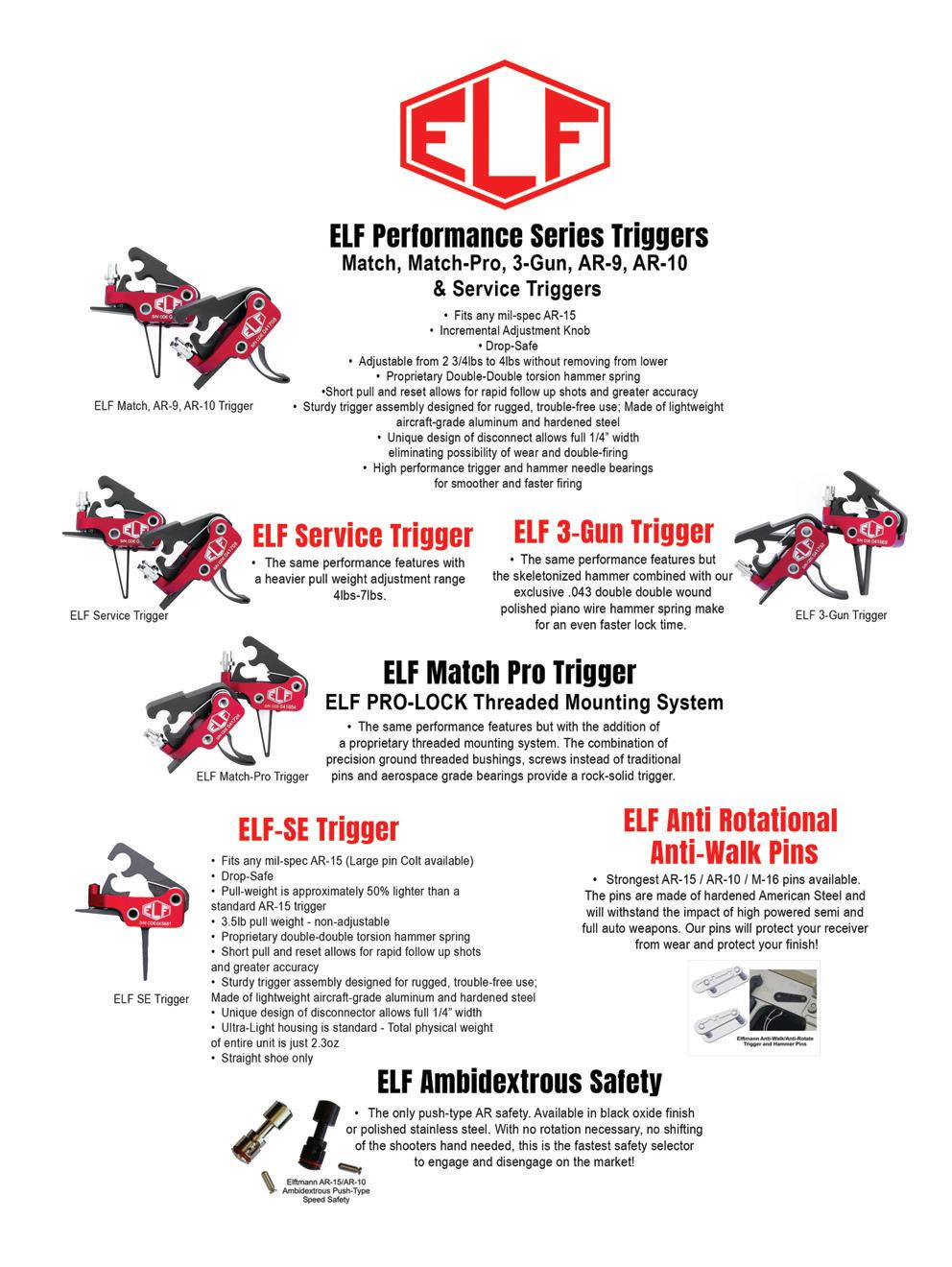

June 3
June 10
June 23
July 8
July 15
July 15
July 22
July 28
July 29
August 5
August 12
August 12
August 19
August 26
Pigg River Precision H.A.M.
The Lead Farm Barrel Burner 2.0
Hornady Precision Rifle Challenge
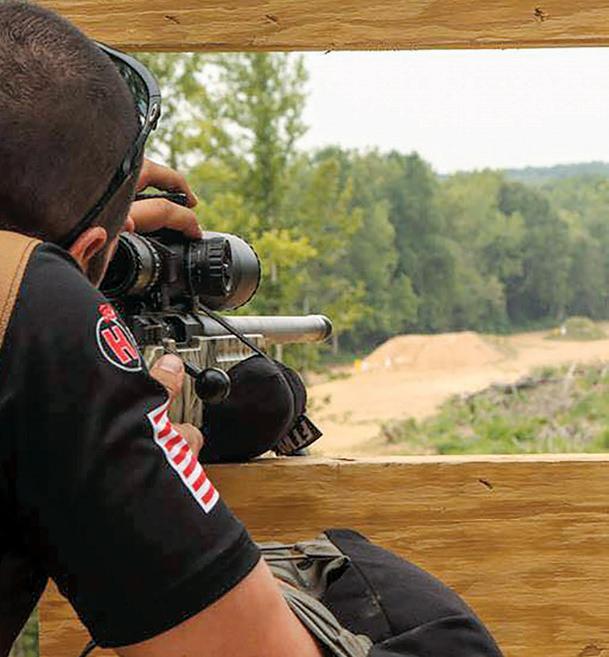
2023 Hodgdon Punisher Positional
THS Steel Challenge
Twisted Barrel Scorcher
Sheepdog Showdown
Blue Mountain Revival
2023 Hoosier Hellfire
Silent Night
RCBS Rumble
Peterson Cartridge Challenge
Magnolia Meltdown
W.A.R. Rifles Shootout

For more information visit www.precisionrifleseries.com
Rocky Mount, Virginia
Prosser, Washington
Evanston, Wyoming
Conway Springs, Kansas
Fort Pierre, South Dakota
Little Rock, Arkansas
Catskill, New York
Vernal, Utah
Butlerville, Indiana
Ninnekah, Oklahoma
Pleasant Hill, Missouri
Kennerdell, Pennsylvania
Carthage, Mississippi
Tremont, Pennsylvania

Ninnekah, Oklahoma
May 6, 2023
1st Place MORGUN KING Open Div. 183.000/100.000
2nd Place CHRIS KUTALEK Open Div. 176.000/96.175
3rd Place ANDY SLADE Open Div. 175.000/95.082

Kennerdell, Pennsylvania
May 6, 2023
1st Place DAVID PRESTON Open Div. 171.000/100.000
2nd Place DERRICK WARREN Open Div. 168.000/98.246
3rd Place FRANCIS COLON Open Div. 167.000/97.661

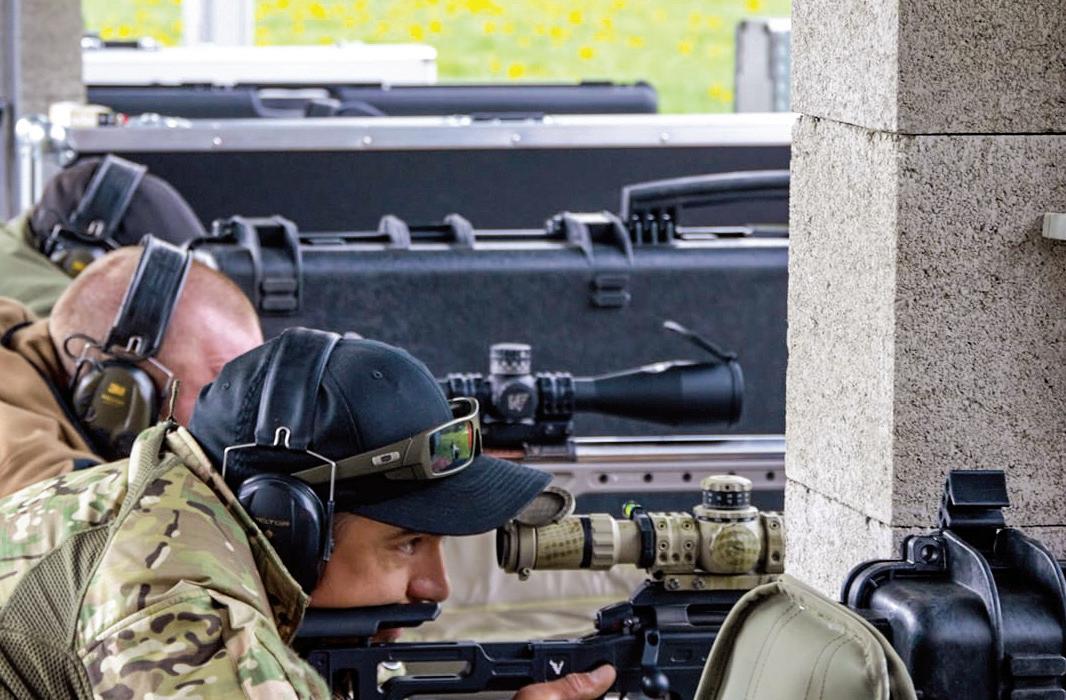

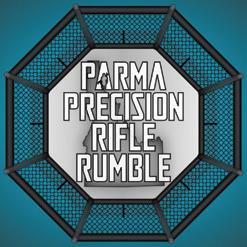




Arizona county's top marshal throws hat in the ring to be state's next US Senator.
STORY BY PAUL PAWELA PHOTOS COURTESY OF SHERIFF MARK LAMBEditor’s note: A portion of this story ran in the November 2020 issue. This is a follow-up piece to spotlight the recent announcement by Sheriff Mark Lamb that he is running for US Senate in Arizona.
Sheriff Mark Lamb is the real-life embodiment of Gary Cooper’s marshal character in the movie High Noon, the story of one brave man who must stand alone against several outlaws and do battle with them. Meanwhile, he is protecting a town whose people cowardly turn their backs on him when he asks for their help. Sounds exactly like what law enforcement officers are faced with each and every day in this country.
Sheriff Lamb is one of those true-grit men who lead from the front, embodying the true lifestyle of the Old West sheriffs of days gone by. His uniform consists of jeans, boots and – nothing says “good guy” more in America – a cowboy hat! Just thinking about that – a sheriff who has Old West standards and values – should get the blood pumping in every American reading this magazine.
Lamb started his career with the Salt River Pima-Maricopa Indian Community, located 15 miles northeast of Phoenix. This was far from a daily desk job; quite the opposite. It is a tough and rough job that requires an equally tough and rough person for the job. For six years, Lamb volunteered for every dirty job that came along, while smiling all the way through the dangers and hardships.
This past April, Mark Lamb, the twice-elected sheriff of Pinal County, Arizona, outside Phoenix, announced he was running for the US Senate as a Republican, challenging Kyrsten Sinema, a Democrat turned Independent.

In 2012, Lamb joined the Pinal County, Arizona, Sheriff’s Office, just southeast of Phoenix. Then in 2017, with an afflatus inspiration and full support and blessings from his family, he ran for sheriff and won, becoming the 24th sheriff of Pinal County.
American Shooting Journal readers may have also caught Lamb on episodes of the action-packed TV series Live PD in recent years.
IN THE WEST, people, especially cowboys like Sheriff Lamb, live by a code. In my opinion, all Americans should adopt it.
• Live each day with courage.
• Take pride in your work.
• Always finish what you start.
• Do what has to be done.
• Be tough, but fair.
• If you make a promise, keep it.
• Ride for the brand.
• Talk less and say more.
• Remember that some things aren’t for sale.
• Know where to draw the line.
Ask Lamb’s staff how they feel about him, and they will tell you the man lives and probably will die by this code.
As mentioned before, Lamb leads from the front; he is not one to always sit behind a desk and be bogged down by the politics of the job. No, he can be found making routine traffic stops, showing up at crime scenes backing his deputies, and doing regular patrols throughout the week.
In setting a high bar for himself and his department, Lamb has seen his department’s morale jump and the overall work environment improve tremendously.
NOW, ONE OF our favorite law enforcement officers is throwing his cowboy hat in the ring to become a United States senator for the great state of Arizona.

What does it take for an individual to become a senator? They tend to be enterprising, adventurous, ambitious, assertive, energetic, confident, optimistic, dominant, persuasive and motivational. Some are considered conventional, meaning they are conscientious and conservative.
Check each box, and you have

Mark Lamb – the perfect candidate for US Senate. What are some of his other credentials?
Lamb has lived in three other countries – the Philippines, Panama and Argentina. This means that in foreign affairs, he is already a more
solid candidate than most elected officials, who have never lived anywhere else than the United States. It also gives him a better appreciation of what the United States has to offer.
In addition, Lamb is supported and endorsed by a great number of
heroes, including Matthew Thomas, who is Lamb’s right-hand man as his undersheriff. Thomas has been with the Pinal County Sheriff’s Office for almost three decades. Throughout his career, he has been a hardened law enforcement officer who has fought drug cartels on the border, drug trafficking, drug running and child exploitation.

Thomas has served in every position a sheriff’s deputy can serve in, and with distinction, including detention, patrol, traffic, SWAT and narcotics. He has also served as a detective, sergeant, SWAT team leader, lieutenant and SWAT commander, and is now the sheriff’s executive officer. There is no doubt that should Lamb win his Senate race, Thomas would become the next sheriff of Pinal County.
So why would I listen to someone like Thomas on why he supports Lamb for the US Senate? Because Thomas is a man of truth and honor; his yes means yes, and his no means no. Because Thomas has risked his life too many times to count for the people of Pinal County, and his current boss has been right by his side in many of those incidents. And because Thomas knows what it is like to be a leader in every aspect due to his knowledge, training and experience.
Thomas has nothing but respect for Sheriff Lamb; he looked me straight in my face and told me as such.
I know what men of honor are. I have worked with them, I have trained with them, and I know their mettle. Both Lamb and Thomas are men of mettle. To learn more about Thomas, I highly recommend his new book, Interceptors: The Untold Fight Against the Mexican Cartels.
SPEAKING
in my vast collection, my favorites are always the personally autographed ones from authors whom I have also had the pleasure of knowing and sharing friendships with. These include books from members of Delta Force, SEAL Team 6, Special Forces, Rangers and legends in the police community, and now sitting proudly on the shelf with a personal autograph

from the man himself is Lamb’s book American Sheriff: Traditional Values in a Modern World.


This book is so special to me; other than the Bible, I can think of no other book that is such an excellent blueprint for the pathway to success in life. As such, I plan to pass it on to my grandsons when the time is right. I love this book for many reasons. One is that it highlights Lamb’s incredible successes, but he also owns his failures in it. As a wise man once said, “Good judgment comes from experience, and a lot of that comes


from bad judgment.”
Some highlights from the book include the fact that Lamb is a direct descendant of eight occupants of the Mayflower, who landed on Plymouth Rock in 1620. That fact in itself is worthy of Lamb being a senator, as he honors his heritage and respects the sacrifices his ancestors made to help this country and make it the bastion of freedom it is. He talks in his book about how his upbringing instilled in him a profound love and appreciation for America.

His list of accomplishments is breathtaking, including valedictorian of his police academy training class, rookie of the year as an officer, officer of the year, and detective of the year, which led to his 2016 win with nearly 58 percent voting for him to become sheriff of Pinal County – which jumped to over 97 percent when he was reelected in 2020. As mentioned in my original article, Pinal County is still the Wild West, and Sheriff Lamb and his deputies are fighting border control issues – drug cartels, human trafficking, etc. – every day.

Sheriff Lamb is a family man who shares five children with his wife Janel of over 25 years. Their relationship is

a testament to their dedicated faith in Jesus Christ. They stood strong when they were recently tested by the loss of their son, his fiancée and their daughter. Yet, true grit and the love of family are their commitment, which speaks volumes.
This author can think of no greater
words to describe Sheriff Mark Lamb as he runs for US Senate than those of another great politician, President Theodore Roosevelt.
“It is not the critic who counts: not the man who points out how the strong man stumbles or where the doer of deeds could have done better. The credit belongs to the man who is actually in the arena, whose face is marred by dust and sweat and blood, who strives valiantly, who errs and comes up short again and again, because there is no effort without error or shortcoming, but who knows the great enthusiasms, the great devotions, who spends himself in a worthy cause; who, at the best, knows, in the end, the triumph of high achievement, and who, at the worst, if he fails, at least he fails while daring greatly, so that his place shall never be with those cold and timid souls who knew neither victory nor defeat.”
Mark Lamb is the man in the arena, and the words he lives by are, “Fear not, do right!” Sound wisdom from an upcoming senator.
For more information about Sheriff Lamb running for Senate, visit sherifflambforsenate.com.



Tap Rack Holsters is a leading provider of premium American-made gun holsters and knife sheaths. Our products are the result of 40 plus years of combined experience in the military and law enforcement field using American made materials. Every Tap Rack holster and sheath is handcrafted using extreme care, precision and built to last because we’re dedicated to providing premium quality products our customers can rely on.

a PREMIUM QUALITY
a FULLY FUNCTIONAL
a LIFETIME WARRANTY
a CUSTOM BUILDS
a BUILT FOR EXTREME USE
a MADE IN AMERICA
a BUILT WITH AMERICAN MATERIALS AND PARTS
a MADE BY AMERICANS AND VETERANS
There are no customer satisfaction surveys in law enforcement. After saving a life, you don’t get a survey emailed to you asking for input on the level of service. You know the ones: “On a scale of 1 to 10, 1 being worst and 10 being best, please indicate how satisfied you are with the customer service you received. Your feedback is important to us!”
Most times, cops respond to calls, do their jobs and never receive much in the way of positive feedback. Of course, there’s no shortage of negative input when someone isn’t happy with what you did. But that’s OK. Folks don’t get into law enforcement for accolades. If you need a constant pat on the back, you’re in the wrong line of work.
Every once in a while, though, someone comes back ’round to say thanks.
DEPUTY DANIEL “RED” Jones of the Hillsborough County Sheriff’s Office in west-central Florida was on “routine” patrol when he came upon a woman in distress. He located her on the side of a road off Highway 60 near Plant City. The woman was pregnant and was about to go into childbirth. Deputy Jones arrived just in time to help
deliver the child. Most officers receive basic first aid training, including how to assist in delivering children.
In his bodycam video, Deputy Jones can be heard asking the woman the predelivery questions. One question that first responders are trained to ask is whether the woman has given birth before. In this case the woman responded that this was her sixth child, to which Deputy Jones replied, “Six? Y’all need a better hobby!” Interestingly enough, this was nothing new for Deputy Jones either. This was the third baby he has helped deliver while at work. The body camera footage can be found on the Hillsborough County Sheriff’s Office YouTube page.
About two weeks later, Mom, Dad and their new baby girl came to the sheriff’s office to meet Red.

Deputy Jones seemed to take it all in stride. As a veteran “deliverer of babies,” it was just another day on the job.

IT’S ALL TOO easy to send a nasty email
or make a social media post when you feel you were unjustly cited for driving too fast, along with a snarky comment like, “Why don’t you go after the real criminals?” However, it’s just as easy to say something nice.
Every day, cops are helping their communities by doing mundane tasks like changing flat tires or putting extra effort into solving a vehicle burglary. They also routinely perform extraordinary feats like pulling people from burning buildings or getting between a citizen and a violent offender.
If you’ve been on the receiving end of an act of kindness, hard work or bravery by a police officer, let them know. Your feedback truly is important to us!
Editor’s note: Author Nick Perna is a sergeant with the Redwood City Police Department in northern California. He is a frequent contributor to multiple print and online forums on topics related to law enforcement, firearms, tactics and veterans issues.

Made of durable steel construction - heavyduty, sealed ball bearing motors - thermally protected - fast, quiet operation - 3/4 to 4 3/4 gallon capacity - industrial and rotary models available. Send for our free brochure!
TRU-SQUARE METAL PRODUCTS, INC. P.O. Box 585, Auburn, Washington 98071 TEL (253) 833-2310 or Toll Free 1-(800) 225-1017 www.thumlerstumbler.com


t-tumbler@thumlerstumbler.com
“Manufacturers of quality case cleaners, deburring and tumbling equipment since 1959”
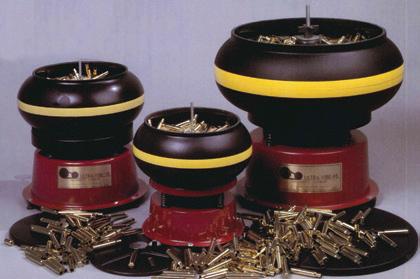
rab your gear; we need to go immediately! The lions were back last night and killed again,” urged Joel Hancock.


I’d just knocked on Hancock’s door, having traveled halfway around the world from my home in Alaska’s Arctic to his in Pretoria, South Africa. I was tired from the long journey, but Hancock’s words invigorated me. Within minutes I was dressed, gear loaded, and we were on the road just after midnight.
We arrived in the remote Shangaan village at dawn. The community of a few hundred people, situated on the border of Kruger National Park, was without power and residents owned no weapons. The lions had been killing under the cover of darkness. Donkeys and goats were the main targets, but people had also been killed. The last person was dragged out of bed in the middle of the night from a hut made of sticks and mud; the body was never recovered.
As the sun rose, Hancock met with the chief. He secured a donkey to use as bait, and just before dark we’d tie it to a lone tree in the middle of a hand-tilled field, a few hundred yards from the park boundary and 100 yards from the eastern fringe of the village. Then we’d use predator calls to get the attention of the lions. Villagers reported three lions, while some said seven. No one knew for sure.
By midafternoon our blind was built, 70 yards from where we’d tether the donkey to a lone tree. This was not
On the trail of killer lions, crocodiles and an Alaskan polar bear – the ‘pinnacle of all hunting.’The jaws of an African lion are big, powerful and efficient, leaving little chance for prey to escape.
Hancock’s first encounter with maneating lions.

IT WAS JUNE – winter in South Africa –and temperatures plunged into the 20s. Shortly after dark we began playing predator calls on a speaker system.

Instantly, hyenas started calling, their eerie sounds echoing across the land. They didn’t bother the donkey. After seven hours of calling, we were tired. “We can take a nap; the sounds of the lions killing the donkey will wake us,” Hancock whispered.
Minutes later, as we sat shivering in the extreme cold, the crunching of bones broke the stillness of the starlit night. Then a thundering roar, mere feet from our blind, sent my heart racing. Without our knowing it, a pride of four lions had silently come to our calls, killed the donkey and started feasting. One lion, less than 10 paces from our ground blind, let out another resounding roar. A lion’s roar can be heard from over a mile away. Hearing it so closely physically shook me.
“We’ll wait for all the cats to start feeding, then I’ll turn on the light,” whispered Hancock. Fifteen minutes later, he turned on the flashlight. My .375 was in the shooting sticks. I had no trouble seeing the four lions, but they were laying side by side. If I shot the near cat, the bullet might pass through and cripple one on the other side.
Finally, a lion stood and I hit it right behind the shoulder. The pride took off in a flurry of dust. Hancock got back on the call and a few minutes later, three cats returned. Again, the shot was

easy, Hancock connecting on this one while I worked the light. Five minutes later, the other two cats returned and I dropped another lion.
The pride of killer cats were all lionesses, and the fourth one wouldn’t come back to our calls. We got in Hancock’s four-wheel-drive Toyota and went after it. I was in the driver’s seat, Hancock in back, leaning over the top of the truck with a man from the village holding a spotlight. Driving into 5-foothigh, thick, yellow grass, we hadn’t made it far when Hancock knocked on the roof, the signal for me to stop. The instant the truck stopped, he fired. The blaze of the muzzle blasted inches from the windshield. Hancock had caught a glimpse of the cat as it charged through the tall grass, and when it was 3 feet from the bumper, he fired, hitting it between the eyes.
We lined up the cats for the villagers
In 1990, the author got his first taste of facing a maneater. Haugen took this polar bear in -42-degree temperatures, amid total darkness, in Alaska’s Arctic after it had killed and partially devoured a man.

to see, come sunup. Finally, their time of living in fear had been put to an end, at least for now. Hancock worked as a problem animal control expert for the South African government and he hired me, short-term, to assist.
THE NEXT DAY, Hancock and I returned to his office to file a report. That’s when he received a message about problem crocodiles in a place he’d been to only a few days prior.
“Last week, I took a big croc from this pond … I just happened to be in the village when it killed a 14-year-old girl,” he recounted.
Crocodiles kill a lot of villagers and livestock every year in the African bush. “Any croc we see over 6 feet long, you shoot,” Hancock instructed. The first croc I shot was just over the minimum size, one Hancock established through experience that
it was big enough to kill humans and livestock. The second one was bigger.
We spotted the second croc sunning itself on a point of land. Stalking through mud and water wasn’t easy, as we had to remain silent. Picking leeches from our legs and bare feet slowed our progress.
Eventually, I was in the shooting sticks, the croc facing away. “When it opens its mouth, shoot it in the brain,” Hancock instructed. Crocs regulate their body temperature by gaping their mouths, and this provided the perfect shot angle. At the sound of the .222, the croc’s upper jaw dropped, its tail flinched, and it was over.
Walking up on the croc, I’ll never forget the solemness in Hancock’s voice. “This is where the 14-year-old girl was killed,” he pointed at his feet and the dead croc.
MY FIRST MAN-EATER experience came in 1990, shortly after my wife Tiffany and I moved to Alaska’s Arctic, where we worked as school teachers in the village of Point Lay. Point Lay consisted of fewer than 100 Inupiat Eskimo people at the time, and polar bears were prevalent in winter.
This part of Alaska is remote. No tourists visit. One year we went 199 straight days below 0 degrees Fahrenheit. Total darkness is continuous for two months. Storms can last weeks, burying homes in massive snow drifts.
On December 9, I was awakened by a 5 a.m. phone call. It was -42 degrees, we were amid 24 hours of darkness and the village public safety officer (PSO) was requesting help. He’d received a call that a bear had attacked a man in the middle of town, underneath one of the few street lights that illuminated the desolate village.
Armed with a .30-06 and a flashlight, finding the attack site wasn’t difficult. Shoulder-length human hair whipped in the wind, attached to chunks of scalp that were frozen to the snow. The blood trail was easy to follow.
Alone, I continued on the trail while the PSO stayed behind to organize a

For four years the author lived on the island of Sumatra, Indonesia. Attacks on humans by Sumatran tigers are not uncommon in remote villages of the jungle island.

and polar bears were prevalent.
It was easy to read the blood, hair and drag marks. I moved quickly and came to a spot where the bear and victim again struggled. The man tried to crawl away, but the bear recaptured him. The amount of blood covering the stark white snow was profound, and the fact that the man was still alive at that point was harrowing.
Continuing down toward the ice, I saw the headlight of a snowmobile approach from below me, pulling up where the frozen ocean met the bottom of the snow drifts. It was a member of the search party. When the machine stopped 30 yards below me, I could see the body of the victim engulfed in red snow, and behind that, the glowing eyes of the polar bear. The light of the snowmobile reflected off the base of a snowdrift, providing just enough light to see the bear for the first time.
Running up to the man on the snowmachine, I saw that over half of the victim had been devoured. Though I tried warning the man about the bear nearby, he didn’t respond. It was understandable, for the sight was gruesome.
I kept moving to catch up with the bear. Unsure if my rifle would fire in the frigid conditions, I tried slowing my pulse so I could align the crosshairs of my scope with the flashlight beam. I was relieved when the gun fired, and the 220-grain bullet hit the mark.
search party. I’d first gotten sworn in by the federal government, which granted me permission to kill the bear if it was a threat to me or had killed the victim.
During the initial attack, the bear bit the man about the head, then grabbed him by the throat or head, dragging him on his back, as evidenced by the heel scuff marks between the polar bear’s footprints atop the frozen snow.
Twenty yards in, the man broke free, crawling on hands and knees. Bloodied finger marks and handprints, along with round indentations left by his knees, told the story. Then the polar
bear seized the man again.
A short distance down the blood trail, I found where the man squirmed out of his black jacket. The collar was riddled with punctures from the bear’s canines, the inside saturated in frozen blood.
The village of Point Lay sits atop the tundra, nearly 100 yards above the Arctic Ocean. In winter, snow covers the land and the frozen sea. Male polar bears are active all winter, feeding on seals and walrus that haul out on the edges of open leads, where the ocean pack ice splits apart due to currents below. That winter, the lead was close to the village,
Today, that man-eating polar bear is mounted life-size in the science room at Homer High School, which retained the hide on a special grant. If you’re ever in this part of Alaska, stop in and see it.
When hunting man-eaters, your senses are on the highest of highs. Every nerve seems to dangle outside your body. Every sound, smell and sight is so much more accentuated than when hunting game with the goal of putting meat on the table. For me, it’s the pinnacle of all hunting.
Editor’s note: Scott Haugen is a fulltime writer. Follow his adventures on Instagram and learn more at scotthaugen.com.



Ihadn’t been sitting over the bait very long, just about an hour, when the bear came to the barrel. We’d run the pack of treeing Walker hounds – belonging to Scott Denny, owner of Table Mountain Outfitters – for the


morning, with no bears put up a tree, but our afternoons were to be spent over bait. The heaviest of the snowpack had come later in the winter and had stayed until mid-May, and there was still considerable coverage on Idaho’s mountaintops, so the season seemed behind by a couple weeks. But bears are bears, and they are ravenous once they come out of hibernation.
This black bear was a boar. He wasn’t a really big boar, nor was he black, yet the Savage Impulse Driven Hunter came to shoulder because of the color of his coat. A deep chocolate head and paws faded to almost blond on his back, and I have a weakness for color-phase black bears. A single 175-grain Federal Terminal Ascent housed in a .308 Winchester case put
On the evolution of Federal’s Trophy Bonded line of bullets.
the bear down quickly and cleanly. When one considers the possible choices for a proper bullet for black bear – which do have tough shoulder bones, yet are not normally taken at long distances – a polymer-tipped boattail with a very high ballistic coefficient might not seem the most logical, but then again, it might. Federal’s family of projectiles, based upon the concept of the original Jack Carter Trophy Bonded Bear Claw, all have some common characteristics that deserve consideration, so let’s check out the family tree.

JACK CARTER WAS a corporate executive who wanted the best projectile available, even if it meant he had to design and produce it himself. Taking inspiration, to put it mildly, from Bill Steiger’s Bitterroot Bonded Core Bullets, Carter’s design saw a pure lead core extending from the nose about half the length of the bullet, chemically bonded to the pure copper jacket and rear shank. His bullet was among the earliest successful bondedcore designs, and while it was costly, the performance warranted the cost to many hunters, especially those who
regularly pursued dangerous game. Eventually, Carter sold the design to the parent company of Federal Premium, which eventually needed to change the formula a bit to best cooperate with the high-speed machines used to produce bullets in their Anoka, Minnesota, factory (the bullets were marketed under the Speer brand name in the original configuration). Adding a bit of zinc to the copper jacket and shank gave the needed resistance to the manufacturing machines, and also hardened up the bullet a bit. Where

Carter’s bullet’s exterior was copper in construction and color, the Federal variant has nickel plating, but it does maintain the same lead-forward core that Carter found so satisfactory. It is
a spitzer bullet, often with a flat (or flatter) meplat, and a flat base as well. Today, Federal Premium offers this bullet in the larger cartridges and calibers most often associated with
African safaris and used in pursuing the biggest and most dangerous animals, like Cape buffalo, lion, brown and grizzly bear, and the like. It is offered in loaded ammunition in the .375 Holland & Holland Magnum, .416 Rigby and .416 Remington Magnum, .458 Winchester Magnum and .458 Lott, and the .470 Nitro Express, as well as in component form in .375, .416 and .474 (.470) calibers. High weight retention, good expansion and straight-line penetration are all characteristic of the Trophy Bonded Bear Claw.
IN THE LIGHTER calibers, the Trophy Bonded Bear Claw was, until recently, loaded in Federal’s factory ammunition, but seems to be discontinued these days. Instead, Federal offers the second member of the Trophy Bonded family, the Trophy Bonded Tip. Equipped with a boattail base and a signature orange polymer tip at the meplat, as well as a sleeker profile, the Trophy Bonded Tip makes



a much better choice for longer shots, in more open terrain. The BC of the Trophy Bonded Tip is greatly improved for a flatter trajectory and less wind deflection, yet the terminal phase is different from the majority of polymertipped bullets on the market.

Like the Bear Claw, keeping the lead core at the nose of the Trophy Bonded Tip also keeps the weight forward, even
when the bullet expands. When the weight stays forward, the bullet tends to penetrate in a straight line, unlike a bullet with its weight rearward (i.e. most cup-and-core designs, and the majority of monometal hollowpoints), which tends to have the rear end kick to one side or another during the terminal phase. Also reminiscent of the Bear Claw, the Trophy Bonded Tip’s

bonded-core construction sees it resist breakup, even at close distances where impact velocities are highest. But at longer distances, when the bullet has had some opportunity to slow down, the polymer tip acts like a wedge to guarantee some level of expansion, even at long distances.
I have spent more than a bit of time with the Trophy Bonded Tip bullet,



The Trophy Bonded Tip will have no problem dealing with the high velocity of the 7mm Remington Magnum, even at short distances.

(FEDERAL PREMIUM)

taking it in my .280 Ackley Improved and .300 Holland & Holland for a plains game safari in Namibia. And from the diminutive springbok up through the red hartebeest, Hartmann’s mountain zebra and the massive eland, I had no luck in keeping any of the Trophy Bonded Tip projectiles in any of the animals. In fact, I got nothing but passthroughs out to 350 yards that trip; the bullet is tough, but expands reliably, and in my rifles it has been one of the more accurate designs.
The Trophy Bonded Tip is available as a component bullet in .277-inch caliber at 130 and 140 grains, 7mm caliber at 140 and 160 grains, .308 caliber at 165 and 180 grains, and .338 caliber at 200 grains. In loaded


ammunition, it is offered in the .270 Winchester, 7mm-08 Remington, .280 Remington, 7mm Remington Magnum, .308 Winchester, .3006 Springfield, .300 WSM, .300 Winchester Magnum, .338 Federal and .338 Winchester Magnum.



BUT FEDERAL WASN’T done, seeing an opportunity to use the Trophy Bonded family formula to take things even further. First it was the Edge TLR – similar to the Trophy Bonded Tip in that it was a polymer-tipped boattail, but with an even higher BC
value due to a steeper boattail and sleeker ogive – but that design soon morphed into the Terminal Ascent bullet. The differences between the two bullets are miniscule; the Edge TLR had a dark nickel finish, while the Terminal Ascent has a brighter nickel finish. However, both feature the proprietary blue polymer Slipstream Tip, which resists the effects of atmospheric drag, and the AccuChannel grooves in the shank, which are also engineered for the best aerodynamic performance.
Compared to the Trophy Bonded Tip, the Terminal Ascent’s boattail is more severe, again to increase the longrange performance by reducing drag.
Terminal Ascent has proved to be wonderfully accurate, and is a great choice for those who pursue game species that are routinely hunted at truly long ranges, like the Coues deer and the various sheep species that inhabit the treeless mountains. You might not see the advantages of the Terminal Ascent over the Trophy
The Terminal Ascent shown in cross section and upset; note the core depth common to the family and the blue Slipstream polymer tip, which initiates expansion and maintains a consistent ballistic coefficient. (FEDERAL PREMIUM)


Bonded Tip inside of the 350- or 400yard mark, but outside of that distance you surely will.
Federal tends to make them in weights on the heavier side of normal, again in an effort to keep the BC high.
Federal offers the Terminal Ascent as a component bullet in 6.5mm at 130 grains, .277 caliber at 136 grains, 7mm caliber at 155 grains, and in .308 caliber at 175 and 200 grains. In their loaded ammunition, Federal is loading


the 6.5 Creedmoor and 6.5 PRC at 130 grains; the .270 Winchester and .270 WSM at 136 grains; the .280 Ackley Improved, .28 Nosler and 7mm Remington Magnum at 155 grains; the .308 Winchester and .30-06 Springfield at 175 grains; and the .300 WSM and .300 Winchester Magnum at 200 grains. As an example, the 155-grain 7mm bullet comes in with a G1 BC of .586 and the 200-grain .308-caliber Terminal Ascent sports a G1 BC figure of .608; for the two most popular all-around bore diameters, these are great long-range choices.
Although the Terminal Ascent certainly seems to be designed for the reach-out-and-touch-’em crowd – and it does this very well, and will open at lower velocities – it also does very well at closer ranges. I took that Idaho color-phase bear at just over 30 paces, and it was killed quickly

and humanely. In fact, among our hunting group in Idaho, all of us were using the same 175-grain Terminal Ascent .308 Winchester load and only one bullet was recovered. That was a straight-on shot on a larger black bear. I didn’t have the opportunity to weigh the recovered bullet, but I’d estimate its weight at 90 percent of its original weight.


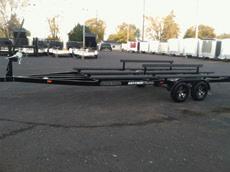






So, depending on your hunting style, terrain and quarry, there is a bullet in this family for you. I have no issue taking the Trophy Bonded Bear Claw when getting off the truck to follow a set of fresh Cape buffalo tracks, nor would I be the least hesitant reaching for either a Trophy Bonded Tip or Terminal Ascent when standing in the quakies, listening to the music of an amorous bull elk. If you haven’t had the opportunity to hunt with these bullets, I’d advise you to rectify that problem as soon as possible; they really are fantastic.
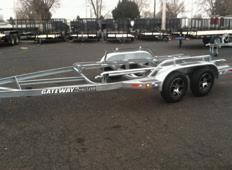
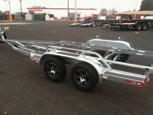
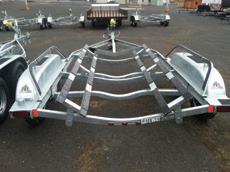

Iown a couple of excellent precision long-distance tactical rifles. One is a Ruger Ranch rifle, topped with a Vortex 3x12 scope. It’s a nice, fairly compact gun, good for packing out in the bush. The other gun is my old SWAT rifle, a Remington 700. Both are .308 caliber. My old sniper rifle is a beast, to say the least. It has a 26-inch bull barrel. For optics, it sports an old-school Leupold 3x12, a reliable, no-frills affair. Both have bipods.
They are both excellent rifles. Each one has accounted for multiple wild pigs and other game. Both have a few drawbacks, though. For the Ruger, the stock is a little short for my taste. The only case of “scope eye” I have ever suffered is from that gun. For the unacquainted, scope eye – also known as scope bite – is when the eyepiece of the optic collides with the shooter’s forehead when fired, causing bruising, bleeding and embarrassment. It happened to me when I initially purchased the gun and was zeroing the scope. It’s now my wife’s hunting rifle.
As for my old sniper gun, it’s a little on the heavy side. The bull barrel, carbon fiber stock, optic, bipod and night vision mount add up to some weight. It really becomes apparent on long stalks, when carrying it can get a little fatiguing, which is not something you want to be concerned with when you have to take an important shot.
SO, I DECIDED to build a gun that incorporated the best features of both guns. I opted to base it off of the Remington 700 platform. I did this for a few reasons. First and foremost, my familiarity with it. Second, it’s a proven system with a long, successful track record. Third, there are a lot of easily obtainable aftermarket options available for it.
Most importantly, though, I knew where to get a good deal on one – I picked a used one up at a local gun store for less than $400. On the upside, it came with a

With features of his SWAT and hunting .308s in mind, a shooter creates 'a quality rifle made specifically for my needs.'
“There is nothing better than building something exactly how you want it,” says author Nick Perna of his new custom tactical rifle.

solid scope mount, which saved me the trouble of having to shell out another 200 bucks to get a good one. On the downside, it had an internal magazine. To load it, you have to pull the bolt back and drop the rounds in the mag. Not a huge deal, but not what I want in a tactical gun. But what do you expect for only 400 bucks?
I opted to stay with .308 for economic reasons as well. I have plenty of bullets in that caliber on hand. There are a lot of great precision rifle calibers on the market today, but the ammo is expensive. Another reason for sticking with the old 7.62mm is that this rifle is primarily going to be used in California as a hunting rifle.
Here in California, you can’t use ammunition with lead in the projectile. You also can’t have ammo delivered to you without going through a licensed firearms dealer or gun store. This means hunting ammo is hard to come by and I already have a limited amount of copper-slug .308 ammo socked away. Plus, being a former law enforcement sniper, I’m familiar with the ballistic abilities of the round.
THE ORIGINAL STOCK it came with was adequate, but I wanted something more specifically tailored to my needs. No need to look any further than Magpul. Magpul is to gun geeks what Lego is to kids. Magpul provides plugand-play add-ons and accessories for most modern firearms.
The Magpul Hunter 700 stock is a great product for anyone looking to accessorize their bolt gun. It’s made from reinforced polymers with aluminum bedding for the portions that attach to the rifle’s action. There are multiple M-Lok slots to mount a bipod, sling, lights and so on. There are also predrilled holes for using traditional sling mounts. The stock has a rubber recoil buttpad, a spacer system where spacers can be added or taken away to change the length of the stock, and an adjustable cheek riser. I picked one up for around $250.

Keeping with the Lego theme, I also purchased a Magpul boltaction magazine well and five-round



magazine. This fit nicely into the Hunter stock and allowed me to upgrade from the internal mag to an external one. Installing the mag well and stock was super simple. Once I separated the old stock from the action, I removed the internal mag housing. I then placed the Magpul mag well in the Magpul stock. The last step was to reattach them to the rifle’s receiver via two bolts. The product costs about $110.
I chose not to Loctite them, instead opting to ensure they were hand-tight, and marking the screws with a Sharpie to make sure they don’t drift over time. I did this just in case I need to separate the stock from the action for whatever reason. This proved to be a good call when I tried to mount the Magpul bipod mount onto the M-Lok slot. I couldn’t get the bolts to line up properly in the slot, so I ended up having to take the stock off the action to facilitate this. There’s probably an easier way to do this, but YouTube didn’t provide one.
FOR THE OPTIC, I went with a lesser-known brand, Huskemaw Optics of Wyoming. Huskemaw makes excellent scopes. Their primary clients are hunters. This is one well-built scope! It is built to survive the rigors of backwoods hunting. It has a second focal plane reticle sandwiched in between two layers of glass for added protection. You can order a bullet drop compensator, or BDC, based on the specific ammunition you are using. Adjustments are in ⅓ minute of angle. This means that at 100 yards, if you click the windage or elevation once, it will move the point of impact roughly ⅓ inch. Most hunting and tactical scopes use ¼ MOA. I’m not sure why Huskemaw opted to do this, but it doesn’t take away from the overall functionality of this excellent scope.
After adding a Harris bipod, I called it complete. I was fortunate enough to have already had the scope and bipod, so that kept the overall cost of this build well under $1,000.
After completing assembly, I ran the gun through its paces. After a few quick adjustments, I shot the three-round group shown above at 100 yards. Not bad.

There is nothing better than building something exactly how you want it. This was a fun project that resulted in a quality rifle made specifically for my needs.




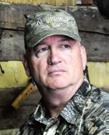

 STORY BY LARRY CASE
STORY BY LARRY CASE
The shotgun as a weapon in wartime doesn’t get the notoriety that an infantryman’s rifle or one of the many machineguns does. There is no doubt that the rifle has ruled as a weapon of war, but in the right circumstances, the shotgun has more than proven its worth. The value of the shotgun as an effective weapon in war comes under some of the same constraints we have talked about here before for home
defense and other “fighting” shotguns. Range and firepower are the key here. When devastating firepower is needed at short range (usually inside 50 yards), the shotgun becomes very handy.
IN AMERICA, THE shotgun certainly had a place in battle as early as the Revolutionary War. American soldiers would routinely load their smoothbore muskets with a single musket ball and several buckshot pellets. Hence, the name “buck and ball.” Coming out of a .69-caliber musket, one can imagine how devastating this load was at close range. Shotguns were even more widely
Confederate cavalryman John Duponte of Dartmouth, Alabama, with a shotgun. (US ARMY FILES)used during the Civil War, especially by the Confederate Army cavalry. Coming from the rural South, most Confederate soldiers were familiar with and had their own firearms, and often this was a shotgun. It is reported that a lack of firearms was a problem from the start for the Confederate Army, and soldiers would often bring their own weapons. At the beginning of the war, long-barreled shotguns that were used for hunting were common and these gave way to some being sawed off. Later, the Confederate Army would purchase shotguns made with shorter barrels so as not to be so unwieldy on horseback.
John Moses Browning’s Winchester Model 1897 pump shotgun saw lengthy service as a military weapon. It was first used by military forces in the Philippines as they were fighting the dreaded Moro tribesmen. This was textbook close-quarter jungle fighting and the American forces soon saw the worth of the shotgun in these conditions. (These battles in the Philippines spawned the beginning of the search for a better sidearm for the military, which brought us another John Browning masterpiece, the 1911 .45 ACP pistol, but that is another story.)
WHEN WORLD WAR I started, with its ghastly trench warfare, the need for the shotgun here did not go unnoticed by one General “Black Jack” Pershing. Pershing had fought with his men in the Philippines and remembered how the Winchester Model ’97 shotgun had performed. Pershing asked the ordinance department to make modifications to the original long-barreled ’97s. These included shorter 20-inch barrels; heat




shields over the barrels, as they soon became hot in battle (the ’97 could be “slam fired,” where the shooter holds the trigger down and the rounds are fired as fast as he can work the action); a bayonet lug; and sling swivels. The iconic Model ’97 “trench gun” was born. While the Remington Models 10 and 11 were also used during WWI, the majority of shotguns that saw combat in France were Winchester ’97s, with over 25,000 delivered.

As a side note, incredibly, the German government protested the use of shotguns in the trenches as inhumane and a violation of the Geneva Convention. The Germans went on to say that because of this, American soldiers captured on the battlefield with a shotgun would be executed. The complaint was denied and may have had something to do with the fact that the Germans were using flamethrowers and poison gas. No Americans were reported to be executed for having shotguns, and General Pershing reportedly told the Germans that if the US forces captured any Germans with flamethrowers they would execute them.
Shotgun use during World War II may not have been as widespread due


to the aspect of more open areas in the European theatre of war. They did see use in the Pacific in jungle fighting and for clearing Japanese bunkers and other fortifications. Six different models of shotguns were accepted by the US military in WWII, the most popular of which was the Winchester M97 and the Winchester M12. One disadvantage of the shotgun was its ammo issues, as paper shotgun shells would often swell after being in damp and humid conditions and would not fit into the chamber even after drying out. Military shotshells were often made with brass casings to avoid this until they were replaced by plastic shotshell hulls in the early 1960s.
WHEN THE US entered into the fighting in Vietnam, the need for the shotgun in jungle-style warfare arose again. Many military shotguns from the WWI and WWII eras were pulled out of storage, refurbished and sent to the troops in Southeast Asia. These included the Winchester M97 “trench gun,” the Remington 870, the Winchester Model 12, the Stevens M520-30 and the Ithaca Model 37 pump gun. The military contracted with Ithaca to Parkerize the metal on these guns to better stand up to the climate and conditions in Vietnam.
Interestingly, this list also included the Stevens Model 77E. Stevens contracted with the military to produce combat versions of their 77E pump gun. These shotguns had 20-inch barrels and were stamped “U.S.” on the receivers. The guns were Parkerized and fitted with rubber butt pads. Many of the 77Es sent to Vietnam had shorter stocks to fit the South Vietnamese soldiers, who were typically smaller in stature than the American troops. The
77E had a large ejection port on the receiver, which no doubt helped with functioning and ejecting empty hulls in combat situations. The Stevens 77E is the forgotten combat shotgun of this era and even though few have heard of it, more of these guns – 50,000 – were delivered and used in Vietnam than any other shotgun.

The shotgun continued to be used by the US military in the Middle East in Iraq, Afghanistan and for the Global War on Terrorism. The Mossberg 500 shotgun and its variants soon came to the forefront as the shotgun used by American troops when Mossberg passed the US Army’s Mil-Spec 3443E test involving dropping the weapon repeatedly and firing over 3,000 rounds of buckshot. The Mossberg 590A1 remains a favorite with its
thick-walled barrel, a bayonet lug, a metal trigger group and an extendable magazine tube.
The venerable Remington 870 stayed in the game and evolved into the Modular Combat System, or 870 MCS, providing a modular shotgun that users could easily modify to do different jobs, such as breaching doors. The 870 MCS can be used as a standard fighting shotgun with a fixed stock and an 18-inch barrel, or a shorter 14-inch barrel with a collapsing stock for close-quarters combat. A 10-inch barrel for door breaching with a pistol grip is also available.
In 1999, the Marine Corps endeavored to find a new combat shotgun and after lengthy testing settled on the Benelli M4. Prior to this, semiautomatic shotguns had


not held much space in the combat shotgun world, as many considered a semiauto still too unreliable for combat operations. Under the military designation of M1014, the Benelli holds seven rounds and proved itself many times in the streets of Fallujah and elsewhere in Iraq in the close-quarters urban fighting done there. Many consider the Benelli M4/M1014 the current king of combat shotguns.

Editor’s note: Larry Case has been a devoted outdoorsman since he was a child. He will admit to an addiction to turkey hunting (spring and fall), but refuses any treatment. He enjoys the company of gobblers and cur dogs that are loud and people who speak the truth softly. Case served 36 years as a game warden in West Virginia and retired with the rank of district captain. You can check out his podcast and other stories at gunsandcornbred.com.



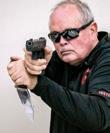
 STORY AND PHOTOS BY PAUL PAWELA
STORY AND PHOTOS BY PAUL PAWELA
The 1969 classic Western movie Butch Cassidy and the Sundance Kid is loosely based on real-life events, and there is one powerful scene in the film that sums up Americans when it comes to self-defense and self-preservation.
In the movie, one of the members of the outlaw Hole in
the Wall gang, Harvey Logan – who was more lethal with a gun than the famed Sundance Kid – challenges the leader of the gang, Butch Cassidy, for his position. Logan, played by actor Ted Cassidy, a mountain of a man, asks Cassidy, played by actor Paul Newman, how they are going to fight to the death: with knives or guns? Cassidy responds by saying, “I don’t want to shoot with you, Harvey.” To which Logan responds, “Anything
you say, Butch,” as he proceeds to pull a huge Bowie knife from behind his back. Bowie knives, as well as neck and boot knives, were commonly carried as backup weapons for the Western cowboy – and still are, for that matter.
After a bit of back-and-forth banter between Logan, Cassidy and the Sundance Kid, played by Robert Redford, Cassidy approaches his Bowie-armed nemesis, saying, “No, no, not yet. Not until me and Harvey get
the rules straightened out.” A surprised Logan counters, “Rules? In a knife fight? No rules!” Cassidy immediately strikes Logan with a boot kick to the groin, sending the big man to his knees, and then replies, “Well, if there ain’t going to be any rules, let’s get the fight started. Someone count. One, two, three, go.” The Sundance Kid quickly says, “One, two, three, go,” at which time Cassidy uses both hands to knock out Logan, finishing the fight and regaining leadership of his gang.
What’s the point, you may ask? The point is that Americans, when fighting in lethal encounters, have always relied on trickery, knives and guns, period. And the best way to be successful in a lethal encounter is to prepare, learning combat techniques and weaponry tactics from a trained professional.
WHEN IT COMES to self-defense instructors, Allen Elishewitz is top-notch. I discussed Elishewitz’s company, Tactician Concepts (tacticianconcepts.com), his training principles, and his four-day selfdefense course in the April issue, and this is part two of that article.
In part one, I discussed the importance of understanding life’s patterns, or common denominators, when it comes to self-defense. In looking at common denominators,
a good self-defense instructor is devoid of ego. The better ones are rather humble, and they have a strong belief in God. It is not about whether you believe in God, but whether they do. This is important for a couple of reasons. First, believing in a higher power means they are obligated to be more truthful, more compassionate, more caring and more loving. They do not see students as potential dollar signs, but rather as future friends. The other reason their belief in God is important is because it gives them incredible confidence when faced with danger, a calmness that is hard to explain. Everyone around them gravitates to them at signs of danger because they are true leaders.
Knowing they have been tested and vetted, they are confident in their warfare skills; they know what works and what doesn’t in the arena of lifeand-death conflict because they are morally driven and they are bound to do everything lawfully. They also understand that the subject they are teaching must work for both the physically strong and less strong.
In a lifetime of training with the who’s who of hall-of-fame instructors, I have only met a handful who meet the above criteria, and Elishewitz is one of those diamonds in the rough. Elishewitz demonstrates his desire to
teach life-saving techniques with an ability to make his students comfortably understand the concepts he is teaching.
AS MENTIONED IN the first article, Elishewitz started the first two days of his four-day training course with the knife. The rationale is that the knife is readily available, easily carried and capable of delivering everything from a deterrent scratch to a lethal stab. In a deadly encounter, the knife is the next best thing to a firearm to have on your person. Elishewitz taught defensive and offensive techniques designed to cut or thrust. He went in-depth as to what constitutes a good self-defense knife, such as blade length, shape, strength and deployability.

It cannot be emphasized enough the knowledge that Elishewitz has on this subject, as he is a master-class knifemaker and his knives are sought after by just about every special operations unit in the free world. Throughout the knife class, students were taught proper stance, head and body position, and foot movement that also worked the next day during the tactical firearms portion of the class.
Once again, safety was thoroughly discussed before any live-fire shooting began. When it comes to the topic of self-defense, the knife and gun are always emphasized, but we don’t often


• You can’t get to your firearm;
• You can’t carry a firearm;
• Need to create distance and time;
• Ran out of ammo;
• Techniques are applicable to improvised weapon;

• Very effective in extreme close range;
• Extremely concealable;
• And widespread accessibility of knives.
talk about who or what the threat truly is. The threat is not a cardboard, paper or steel target; no, it is a living, breathing human being who is likely a seasoned repeat offender. Usually, these offenders are committing crimes with one or more partners. They are sometimes highly skilled and proficient with firearms and sometimes very hard to kill.
Here are some reminders: Emmett Dalton of the famed Dalton Gang was shot 23 times and lived. Cole Younger of the James-Younger Gang was shot 11 times and lived. And during the infamous 1986 FBI Miami shootout, William Matix was shot six times before dying and his partner Michael Platt was shot 12 times before dying (note: kill shots were head shots). Both were highly proficient with firearms and shot around 2,000 rounds a week.
Elishewitz fully understands that his students are training to defend themselves against hardened criminals and makes no bones about it when putting his students through realistic, high-pressure drills during firearms training.


The course consisted of a full day of intense firearms training in every conceivable form, including close-quarter shooting, man-onman competition and precision marksmanship competition, with all events being pushed to the limits. At the end of the day was a full debrief on what went on and why, and every participant’s confidence was much higher than when they started.
The final day covered shooting in and out of vehicles. While this type of training is usually done by trained bodyguards, Elishewitz conducted his course with a much more personal touch.
He spent time showing students how to properly slip the seatbelt out of position to bring the firearm into play inside the vehicle. He also demonstrated the proper way of getting out of the seatbelt to get into a fight outside the car. Why was so much time devoted to the vehicle? Most people might think that the home is the number one location where one

• Ninety percent of gunfights occur at 7 yards or less (50 percent being at 5 to 10 feet);






• Whoever gets the first solid hit to the chest has an 85 percent chance of winning;
• Movement will decrease your chances of being hit by 70 percent;
• New York Police Department shooting stats show a felon’s hit percentage from 50 to 70 percent under 10 feet and 7 percent at 10 to 12 yards;
• Multiple assailants are involved in 65 to 70 percent of shootings –multiple attackers in 50 percent of police assaults;
• In 40 years of NYPD gunfights, 38 percent or more have been onehanded shooting;
• Experts were only 10 percent more accurate than novices between 3 and 15 feet;
• And if you stand still, you have an 85 percent chance of being hit and a 51 percent chance of being shot in the torso.

might engage criminals, but in fact it is a vehicle.

ELISHEWITZ UNDERSTANDS THAT a civilian man/woman is still the universal common denominator in the judicious use of deadly force to preserve the individual, close relatives and innocents. People will always be called on to face dangers, whether armed robbery in the home, a carjacking or an active shooter. The real pattern to this is being willing. Elishewitz’s motto that he lives and dies by is, “The more you sweat in training, the less you bleed in battle.”
In all areas of self-defense, Allen Elishewitz and Tactician Concepts are hard to beat, and that’s my two cents. ★

Editor’s note: Author Paul Pawela is a nationally recognized firearms and self-defense expert. For his realistic selfdefense training, see assaultcountertactics.com.






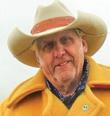
SPG is a highly recognized lube for black powder shooting, primarily developed for filling the grease grooves on elongated bullets, either for muzzleloaders or for black powder cartridges. More than a year ago, SPG Sales introduced a bullet lube for “hot weather” called SPG Tropical and it has become popular with shooters during the warmer seasons. Now, to address the colder areas and seasons, SPG Sales has introduced Bear Grease for cold-weather black powder shooting. Bear Grease is intended for all black powder shooting, both for muzzleloaders using patched round ball or elongated bullets as well as for black powder cartridges.
While Bear Grease is the trade name that SPG Sales has selected for this product, it doesn’t actually contain any real bear grease. The image on the label shows the face of a polar bear and the company says that Bear Grease will not freeze. That can be a real benefit when on the hunt with a muzzleloader. While I won’t try to claim any knowledge of the ingredients in Bear Grease, I can say that I did some good shooting while using it.

I WANTED TO do some test firing with Bear Grease using both a muzzleloader and at least a couple of the black powder cartridges. My first choice was a flintlock .50-caliber rifle shooting patched .490inch round balls. The patches came from October Country – their “daisy” shaped patches of .015 inch thickness. And, mainly for this test, the patches were dry
and lubed only with the new Bear Grease. With the .50-caliber flintlock rifle, the dry patches were simply rubbed on the grease to get some of the lube into the fibers of the patches, then they were loaded and fired. The temperature that morning was just over 50 degrees and the lube was working very well, both in terms of getting the patches loaded with lube and shooting with those lubed patches.
My powder charge in the .50-caliber was not a heavy one, just 45 grains of GOEX 3Fg. And my target was not posted at long range; this was just a shooting test to check on the new lube, so the target was posted at just 25 yards. The first patched ball going down the clean barrel was certainly easy and, in the picture of the group on the next page, that shot was
the furthest to the right. Then the second ball was rammed down the 42-inch barrel and it was just slightly harder to push but not a problem. And that ball started the three-shot gaping hole in the middle of the group.
The following shots, numbers four and five, continued to be on the easy side; they were no harder to ram down than shot number two. And I certainly can’t complain about the five-shot group. The rifle’s sights were held at 6 o’clock on the target, but I really should have held dead-on for centering hits in the bull’s-eye. So the rifle was hitting right where it was aimed. With results like that on my very first try, I must give Bear Grease some high marks, for sure.
At least two of the patches I had

used while doing this shooting with the muzzleloader could be seen in the grass smoking and smoldering away. I don’t know if the patches are prone to burning, or if the new lube is more susceptible to burning, or if this was purely coincidental. I mention this because I see burning patches rather rarely, although I’ve certainly seen them before. So, with this in mind, I hope that all shooters of muzzleloaders will be careful and be advised that all patches, lubed or unlubed, can burn when the guns are fired.
Five shots at 25 yards with the flint-gun started a rather good group for Nesbitt.

NEXT, I WANTED to try Bear Grease in at least a couple of black powder cartridges. To do this, I pan-lubed the bullets, rather than refilling my bullet lube-sizer with this new lube. The pan-lubing was easily done, right in the metal can that it comes in. Bullets for the .44 Russian and for the .4440 were both lubed in the lid of the metal can, while longer bullets for the .50-70 were lubed in the taller bottom of the can. That was quick and easy, and soon enough I had ammo ready and loaded with bullets greased using the new lube.
The 250-grain bullets for the .44 Russian
were loaded over 18½ grains of my favorite Olde Eynsford 2F revolver load. Only 18 cartridges were loaded; just enough to see how they’d work. And nothing special was done for the shooting of those loads, so my shooting could have been more precise. All I did was post a target at 30 feet, where most of my handgun shooting is done, and fire offhand for “score” to see how the ammo performed with this new lube. Those 10 shots all went into the black, which was very pleasing.
At the same time as when the .44 Russian bullets were being pan-lubed,

I made sure that a similar number of bullets for the .44-40 – from Accurate Molds’ No. 43-205C – got their large single grease groove filled with Bear Grease. Those bullets were then loaded – unsized because they drop from the Accurate mold with a diameter of .430 inch – into Starline .44-40 cases over 35.0 grains of Olde Eynsford 2F powder.
Those .44-40 loads were all fired from my Model 1873 lever-action from Cimarron Firearms with the 30-inchlong barrel. The target was posted at 50 yards and shooting was done from a benchrest. My shooting was probably the weak link in the chain for that group because the gun and the loads worked just fine. The group wasn’t too bad, but not as nice as what I’d like to show, so no pictures were taken.
WHAT DID MAKE it into the pictures was a group fired at 100 yards with my heavybarreled rifle from C. Sharps Arms in .5070. I mentioned how the bullets for these loads were pan-lubed, but the bullets for the .50-70 were also sized to a diameter of .512 inch. Then those bullets were loaded into Starline cases over 65.0 grains of compressed Olde Eynsford 2F powder before the loads were run through a taper crimp die, making them ready for shooting. Also worthy of mention is that the .50-70 loads were primed with CCI large pistol primers. Several black powder cartridge shooters believe that modern large rifle primers are “too hot” (for lack of a better description) for consistent ignition in black powder loads. I tend to be one of those shooters and I’m using large pistol primers with my black
powder loads more often.
For this shooting test, two targets were posted at 100 yards. The shooting began with five shots fired at one target, then the sights were adjusted to bring the group to the left. Following that, five more shots were fired at the second target.

Shooting at the second target brought back some loud echoes of my time on the Air Force rifle team, so many years ago. With our M-1s, we’d make sight adjustments, then tap the peep sight to help that adjustment “sink in.” Then we’d fire one or two shots before determining if the sight adjustment was proper; those two shots would help the sight “settle down” or “grow accustomed” to the new setting, just in case anything was binding in the sight.
When I fired the first shot at the second target, it hit too far to the left. The




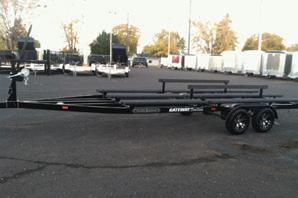




next shot was more favorable. Three more shots were fired at the same target and those produced a ragged hole where the second shot had been. Something held the rear sight too far to the left for the first shot on that target, but then the four-shot group with the .50-70 is a nice reward. Following that, more adjustments were made in both windage and elevation, and my attention went back to the first target. Seven more shots were
fired with the .50-70 Sharps, all with the Bear Grease lube, and those seven shots centered rather well in the bull’seye, where scores of 9s or 10s could be claimed. Then, after firing 17 rounds without wiping the bore, the muzzle of the .50-70 rifle was looked at. There was what we call a “lube star” – in black powder cartridge shooting, if you don’t have a lube star at the muzzle of the rifle, you simply don’t have enough lube. In

this case, the lube star looked quite nice. My shooting with the new Bear Grease black powder bullet lube was rather informal. I only used it in the way that I’ll be shooting with it in the near future. Let me say that I like it.
Bear Grease is priced at $8 for the 2-ounce metal can (which I used to panlube my bullets in) or $18 for a ½-pound block. For more info about SPG’s Bear Grease, visit blackpowderspg.com.

